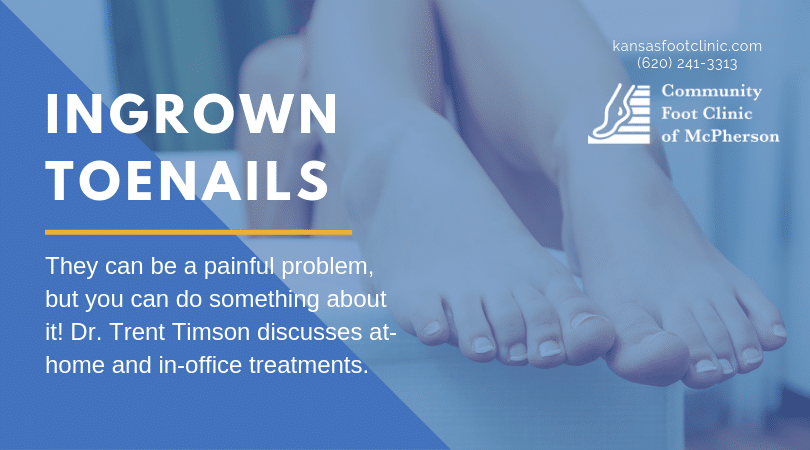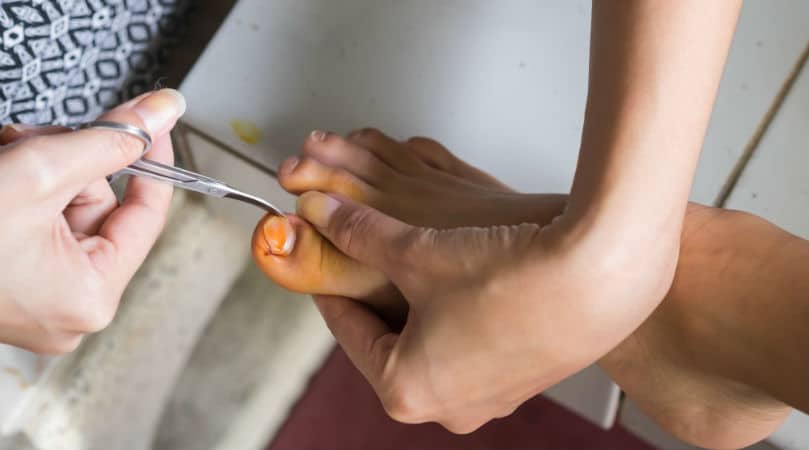Finding Relief for an Ingrown Toenail
An ingrown toenail tends to rank up there with paper cuts and clocking your head on a low-hanging beam on the list of annoying injuries. Having one reminding yourself of its presence throughout the day is never fun, especially when you have a job or hobby that keeps you on your feet.
The good news is that most ingrown toenails are relatively simple to care for at home and don’t require much in the way of outside intervention. The bad news is that there are some instances when home treatment is likely not going to cut it. When that happens, we are here to provide the professional help you need.
When Should You See Us About an Ingrown Toenail?
An ingrown toenail is a pain, but when is it enough of a problem to give us a call? Here are the conditions when an ingrown toenail should be treated professionally.
- Your toe shows signs of infection. These signs can include redness that is radiating and spreading away from the toe, discharge of pus (or a buildup beneath the nail), or severe pain. Not all three symptoms always need to be present.
- The toe is especially painful. Even if it is not due to an infection, an ingrown nail that is giving you a lot of pain is best treated with expert care.
- You live with diabetes. When diabetes is in play, the risks of even small nuisances on the feet turning into big problems increases significantly. Please, at the very least, give us a call and let us know what is going on.
- You frequently get ingrown toenails no matter what you do. If your ingrown toenails are easily treated, there is still an underlying problem if you are consistently suffering from them. We can help you get to the root of the problem and provide intervention for relief if needed (more on that later).
If none of the above factors are present, at-home treatment is likely going to work just fine for you. However, if you are unsure or have any questions, please do not hesitate to contact our office. That’s what we’re here for!
Treating an Ingrown Toenail at Home
A tried and true method for treating ingrown toenails at home starts with giving the foot a good soak.
Get a small basin of warm water and soak your foot in it for about 20 minutes at a time. Feel free to add some Epsom salts if you wish, but don’t go overboard with additives. You never know what might end up stinging or irritating the injury. The ultimate goal here is to soften the skin and nail to help relieve some of the pain and swelling.
After you have finished a soak, completely dry the foot. If you wish, place a small piece of cotton or length of dental floss beneath the ingrown edge of the nail. Be careful with this and do not force; you are seeking to help guide the ingrown edge of the nail away from the skin.
Either way, apply some antibiotic cream to the area to help avoid infection, then bandage the toe to help protect it against the bumps and jostles of the day.
Soak your foot a couple times per day, replacing the cotton, floss, and/or bandage when you do. If the pain is bothersome, take acetaminophen or another over-the-counter pain reliever as directed. If it is convenient and reasonable, wear open-toed shoes to prevent putting extra pressure on the toe.
Whatever you do, don’t try to dig into your nail with a pair of clippers or some other instrument to rip the troublesome part of your nail away. Not only is this all but guaranteed to hurt like the dickens, it also will greatly increase your chance of getting an infection or just generally making the problem worse.
Professional Options for Ingrown Toenail Care
If you do have any of the factors we noted above, or home treatment hasn’t shown any progress after a couple days, we can help your ingrown nail here at the foot clinic.
In some cases, we may be able to carefully lift the nail to allow extra relief and faster healing. More times, however, when the case is tougher, a partial removal of the nail will be necessary. We can perform this procedure quickly in-office with a local anesthetic. It can take care of a lot of pain right away and you should be able to proceed with your day as normal.
In cases when ingrown toenails repeatedly return, we will likely look further into the underlying causes. Perhaps there is something about your footwear or the way you trim your nails that makes you more likely to have an ingrown nail.
For some people, though, their propensity for ingrown toenails is inherited. In other words, their nails are just naturally inclined to grow curved, and there isn’t anything that can really be done to fix that outside of removing part of the nail matrix (where the nail grows).
This procedure will prevent new nail from growing along the border causing trouble, while the rest of the nail grows as it always has. We can fully discuss the details of this in-office procedure if the option presents itself.
Get Rid of Ingrown Toenail Annoyance
A pestering ingrown toenail will hopefully last a short time. But if any problems arise, you are always welcome to reach out to us.
We have three offices in the area that are ready to serve you:
- McPherson – (620) 241-3313
- Herington – (785) 258-5130
- Hillsboro – (620) 947-3114
If you prefer to contact us electronically, you can also fill out our online contact form and a member of our staff will reach out to you.
© Community Foot Clinic of McPherson. All Rights Reserved.
Privacy Policy | Terms & Conditions
Web Design by CP Solutions
Marketed by VMD Services


